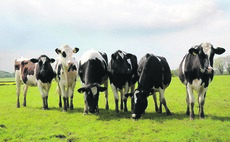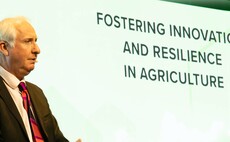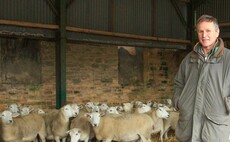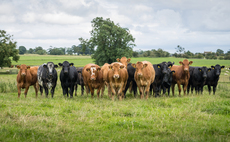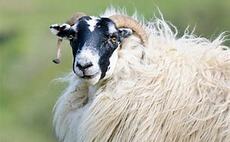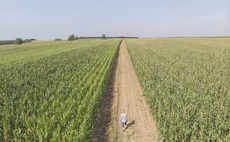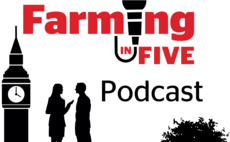A report published by the Centre for Innovation Excellence in Livestock is believed to be the first of its kind to model and collate data at scale on how net zero can be achieved. Ellie Layton reports.
Greenhouse gas emissions could be reduced from the main livestock types by 23% and ammonia emissions by 15% if wide-scale and highly effective adaptions are implemented across UK farms, according to a report published by the Centre for Innovation Excellence in Livestock (CIEL).
Phil Bicknell, of CIEL, says the report, Net zero and livestock: How farmers can reduce emissions, covers a range of scenarios in real-life case studies across dairy, beef, sheep, pig and poultry farms.
He says: It offers realistic options which focus on real-life challenges for both farmers and the supply chain.
UK farmers are businesses working with different systems and challenges all on different geographies. A one-size-fits-all plan will not work for the UK dairy industry, as every farm is different.
Dr Mark Young, head of innovation at CIEL, says the report is a follow-on from CIELs report published in 2020, entitled Net zero carbon and UK livestock.
Dr Young says: The 2020 report established benchmarks for a range of farming systems across the main livestock types in the UK. It also assumed agricultures target of a 64% reduction in emissions by 2050 applies to livestock agriculture.
The newly released report goes a step further to look at a wide range of mitigation options which can help reduce emissions at farm level.
The report aims to provide farmers, advisers, supply chain partners and policymakers with the information to support evidence-based decision-making when it comes to farming in a net zero world.
Dr Young says there are many positives to take from the findings. However, the report reiterates the significant change required if the UKs livestock industry is to achieve its net zero target for 2050.
He says: The need for improvement in herd or flock production efficiency should be the focus for most farmers in the drive to reduce their carbon footprint and this report highlights that need.
Increasing productivity per animal while reducing input costs and maintaining overall productivity at the same level is something we can do right now.
Farmers can focus on aspects such as age at which females first breed and their longevity and rate of milk production.
Dr Young adds the report highlights the importance of new technologies and wide-scale adoption to reduce emissions further.
He says: The use of rumen methane inhibitors was one mitigation strategy modelled on farms and detailed in the report.
The assumed efficacy of this technology could be considered high and therefore work is ongoing to help bring these technologies to market and develop delivery mechanisms which are better suited to grazing systems and less dependent on concentrate feeding.
Although the report delivers positive, practical solutions for the industry, Lyndsay Chapman, chief executive of CIEL, says it also highlights that change on-farm requires collective effort.
She says: All those within the supply chains must work together to reduce emissions while still producing the nutritious, safe food the UK needs.
Farmers cannot and should not be expected to deliver this on their own. This report reconfirms that we could deliver a large reduction in greenhouse gases to significantly contribute to the goal of net zero carbon by 2050, but even that requires universal adoption of the various known mitigations across all livestock farms in the UK; something we are not currently achieving.
The report includes on-farm models of the impact of mitigations on UK farms, all assessing feed, forage, animals, manure and fertiliser.
Mitigations identified within dairy systems as having the highest potential impact included use of methane inhibitors to reduce the methane produced from the digestion process, improved sward productivity, improved herd efficiency resulting in fewer animals needed to produce a similar output and slurry and fertiliser management.
Mr Bicknell adds there is also a large opportunity for carbon sequestration.
However, he says: There is a gap of knowledge and verification is needed to ensure reliability.
CIELs findings for the way forward
Focus on efficiency: Adopt mitigations which also increase profit
New technologies: Exploit as they become available
Farm carbon calculators: These are essential
Collaboration across sector: Delivering change requires a collective effort












